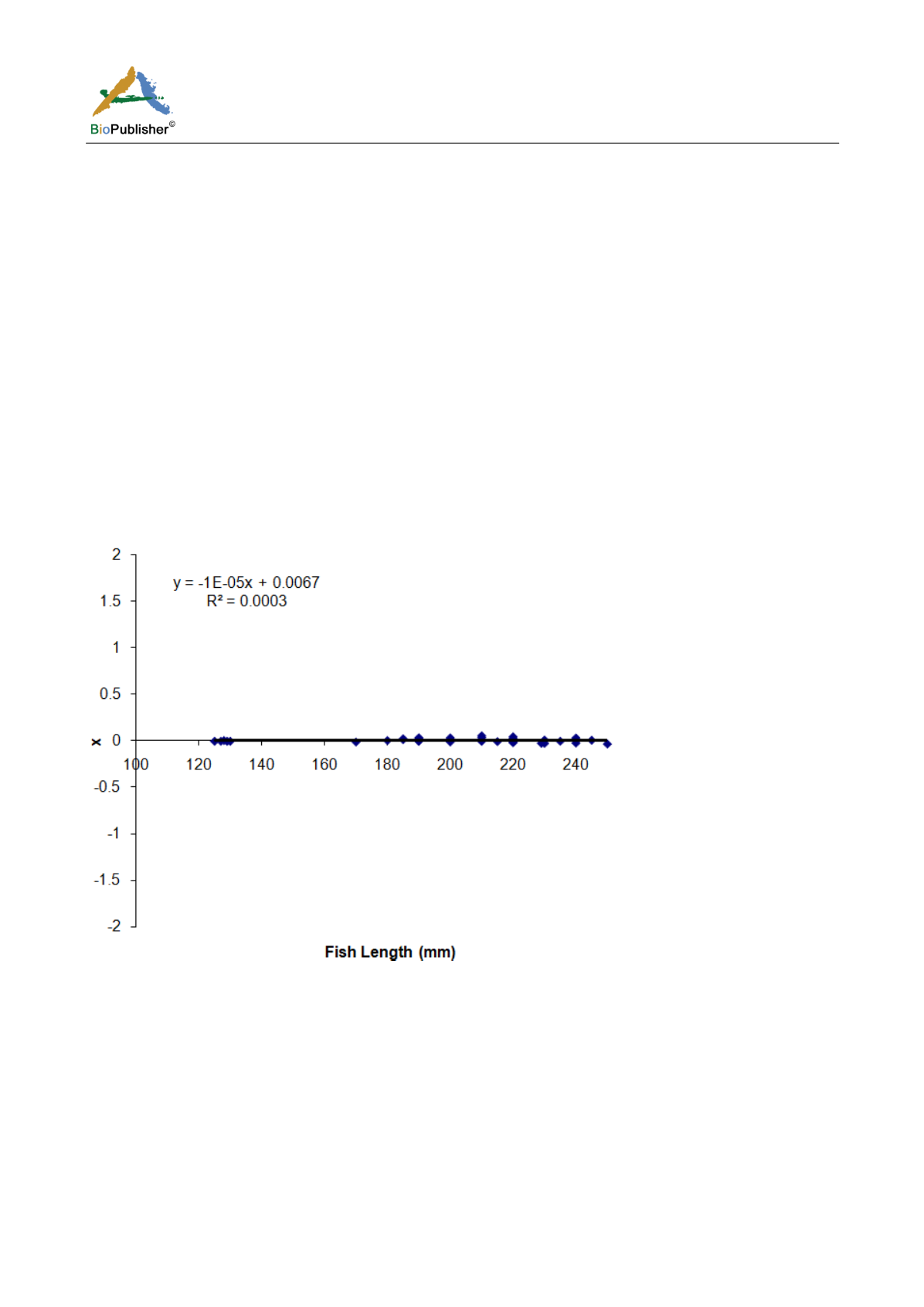
International Journal of Marine Science, 2017, Vol.7, No.37, 366-370
367
was used to record the weight of the otolith. The otolith non-asymmetry (
x
) was measured using following the
formula:
x
= (MR – ML)
M
-1
Where MR and ML are the otolith weights of the right and left otoliths and
M
is the mean mass of the right and
left otoliths. Theoretically,
x
value can take any value between -2 and 2, and
x
= 0 indicates the absence of mass
asymmetry (MR – ML), while
x
= -2 or
x
= 2 denote the maximal asymmetry (absence of one otolith). The
x
positive value indicates that the weight of the otolith on the right is larger than that on the left, while the negative
sign denotes the opposite. The association of the species absolute value of |
x
|
and the increase in the growth of the
otolith was investigated. The
absolute value of the species otolith weight non-asymmetry is
estimated as the
average individual value. To assess otolith growth rate, the relationship between otolith mass and fish length,
m =
a x l + b
, was determined
,
where
“l”
is the length of the fish,
“a”
is the coefficient
illustrating the growth rate of
the otolith, and
“b”
is a constant.
2 Results
The
x
mean value is 0.0049 + 0.0237 SE,
n
= 45 (Figure 1) and the value of |X| is 0.0156 + 0.0134 SE,
n
= 45
(Figure 2). Absence of association between fish length and both |X| was revealed (y = 0. 0006 x + 0.0222) (P >
0.05,
R
2
= 0.1107) and
x
(y= -0.0001 x +0.0328) (P > 0.05,
R
2
= 0.0219).
Figure 1 Saccular otolith mass asymmetry x in
Lutjanus ehrenbergii
as a function of fish length
The correlation between otolith mass difference (MR – ML), and fish length was more intricate than the relation
between
x
and fish length (
n
= 45, standard length = 210-230 mm,
P >
0.05, y = -2E- 05x + 0.0051,
R
2
= 0.0177)
(Figure 3).The saccular otolith mass difference increases with fish length.
3 Discussion
The results have shown that the value of
x
falls in the range -0.2 and +0.2, which is comparable to what is
normally given for other marine fish species (Lychakov, 2013) and it is found that the mass asymmetry in the
otolith is less than 0.05. An agreement with the value of weight asymmetry observed in marine fishes (Lychakov
et al., 2006) and did not depend on otolith growth rate. Moreover, the absolute value of the otolith non-asymmetry
with the fish length and this is a characteristic of the littoral fishes (Lychakov, 2013).


